Sultan Abdul Hamid II
5 min readSultan Abdul Hamid II
Abdul Hamid II, brought into the world on September 21, 1842, and dying on February 10, 1918, filled in as the King of the Ottoman Domain from 1876 to 1909. He was the last king to apply command over the public authority, procuring his time the title of the Hamidian Period in history effectively. Be that as it may, his rule saw a time of decline described by different difficulties, including uprisings, quite in the Balkans.
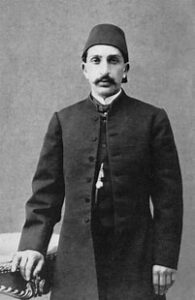
During his standard, Abdul Hamid II directed two critical conflicts. In the first place, the Ottoman Domain confronted a fruitless conflict with the Russian Realm from 1877 to 1878, which brought about regional misfortunes and expanded burden on the realm’s solidness. Afterward, in 1897, the Ottomans participated in a fruitful conflict against the Realm of Greece. Be that as it may, their benefits were restrict because of the intercession of Western European powers.
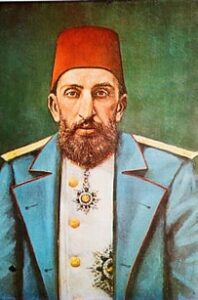
Abdul Hamid II’s tyrant arrangements and protection from modernization and change added to the debilitating of the Ottoman Realm during his standard. The Hamidian Period denoted a basic crossroads in Ottoman history as the realm confronted interior difficulties and outer tensions that would at last shape its direction towards possible disintegration.
Early History
Ruler Abdulhamid II, otherwise called Abdulhamid II, was the 34th King of the Ottoman Domain, administering from 1876 to 1909. He was brought into the world on September 21, 1842, in Istanbul, Turkey, and his reign denoted a vital period in Ottoman history. Described by huge difficulties and changes both inside the realm and on the worldwide stage.
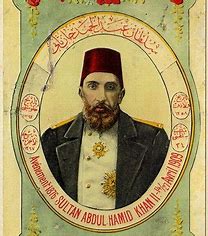
Abdulhamid II climbed to the privileged position after the affidavit of his more seasoned sibling. King Murad V, because of his psychological instability. He confronted a turbulent and complex political scene from the very outset of his rule. The Ottoman Realm was encountering interior conflict, patriot developments, and monetary hardships. Furthermore, outside pressures from European powers and regional misfortunes presented huge dangers to the realm’s respectability and sway.
All through his rule, King Abdulhamid II sought after a strategy of “Ottomans’” fully intent on joining the different ethnic and strict gatherings inside the realm. He looked to reinforce the focal power and keep up with the regional trustworthiness of the Ottoman terrains. Notwithstanding, this approach confronted difficulties as patriot developments and calls for autonomy increased among different ethnic gatherings.
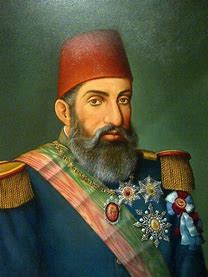
One of the main occasions during Abdulhamid II’s standard was the suspension of the Ottoman Constitution in 1878, which had been laid out only two years earlier. This occasion prompted his standard being marked as an absolutism, he concentrated power and accepted greater power.
Accession to the Ottoman throne
Abdul Hamid’s way to the Ottoman privileged position started when his sibling, Murad, was oust on August 31, 1876. After rising to control, there were some who were dazzled by Abdul Hamid’s unassuming landing in the Eyüp King Mosque. Where he got the Blade of Osman with few orderlies. Many had trusted that Abdul Hamid II would uphold liberal developments. Yet his promotion happened during a staggeringly difficult and basic period for the Realm.
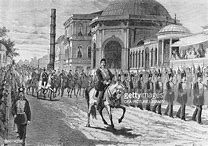
During this time, the Ottoman Realm confronted extreme monetary and political strife, alongside clashes in the Balkans. And the Russo–Turkish Conflict of 1877–1878, which presented huge dangers to the domain’s actual presence. Rather than supporting liberal changes, Abdul Hamid II exploited the troublesome conditions to lay out an absolutist system. He broke down the parliament and solidified all political power in his grasp, successfully usurping control until he was at last oust.
First Constitutional Era, 1876–1878:
Abdul Hamid teamed up with the Youthful Ottomans to achieve an established plan that meant to make ready for a liberal change upheld by Islamic standards. The Youthful Ottomans accepted that the contemporary parliamentary framework reflected the early Islamic act of meeting, known as “shura.”
In December 1876, different variables remembering the 1875 uprising for Bosnia and Herzegovina. A continuous conflict with Serbia and Montenegro. And the unforgiving measures taken to stifle the 1876 Bulgarian resistance, made huge distress across Europe. In light of these occasions, Abdul Hamid made the stride of ordering a constitution and laying out a parliament.
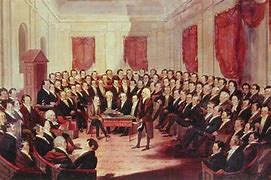
The assignment of concocting the new constitution was share with Midhat Pasha, who drove the commission answerable for this undertaking. On 6 December 1876, the bureau endorsed the constitution, conceding Abdul Hamid the position to banish people considered threatening to the state. Moreover, the constitution presented a bicameral lawmaking body with arrangements made by the king.
In unkindness of uncertainties around the Russian risk to English securities in India. The English government categorical not to intermediate as of endearing municipal estimation counter to the Couches. This transformation in widespread calculation tracked rumors of the Ottoman Province’s merciless suppression of the Bulgarian rising. Afterward, the Russian supremacies proficient a hurried accomplishment, plus the debate extended a supposition in February 1878.
War with Russia
Russo-Turkish War (1877–1878)
The Arrangement of San Stefano gave Russia huge impact in southeastern Europe after it crushed the as of late freed states. Nonetheless, the Incomparable Powers (particularly the Unified Realm) requester. That the deal be overhauled at the Congress of Berlin to restrict Russia’s benefits. As pay, Cyprus was surrender to the Unified Realm in 1878.
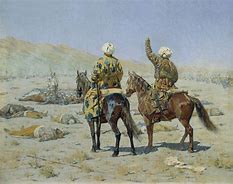
In Egypt, the khedive was oust and supplanter by a more consistent ruler. Notwithstanding, the English became worried about the developing force of Egyptian patriot pioneer Orabi Pasha. In 1882, the English sent troops to Egypt and Sudan to lay out command over the two districts. Cyprus, Egypt, and Sudan remained ostensibly Ottoman belongings until 1914. When the Unified Realm officially added them after the Ottoman Domain joined the Focal Powers in The Second Great War.

Abdul Hamid II’s push for trains prompt the foundation of 18 expert schools, including Darulfunun, which is currently known as Istanbul College. He likewise made an enormous arrangement of optional, essential, and military schools all through the realm. In a 12-year time frame (1882-1894), 51 helper schools were construct. The objective of these instructive changes was to counter unfamiliar impact, so they utilized European showing strategies while likewise imparting in understudies a feeling of Ottoman character and Islamic qualities.
Political decisions and reforms
Abdul Hamid II likewise patched up the Service of Equity and made rail and postal frameworks. The postal framework extended to incorporate the furthest pieces of the realm. Rail lines associated Constantinople and Vienna by 1883, and before long, the Orient Express associated Paris to Constantinople. During his rule, rail lines inside the Ottoman Realm extended to interface Ottoman-controlled Europe and Anatolia with Constantinople also. The expanded capacity to travel and impart inside the Ottoman Domain supported Constantinople’s impact over the remainder of the realm.

The predominant conviction was that Abdul Hamid II would embrace a liberal methodology as a ruler, however in opposition to assumptions, he expected a more safe position after rising to the lofty position. He incorporated power at the Yıldız Magnificent royal residence, lessening his clergymen to simple secretaries. This cycle, alluded to as Istibdad, was impacted by different elements, including monetary difficulties, the 1875 revolt in Bosnia and Herzegovina, clashes with Serbia and Montenegro, the Russo-Turkish Battle, and the general reaction against his organization’s concealment of the Bulgarian opposition.





